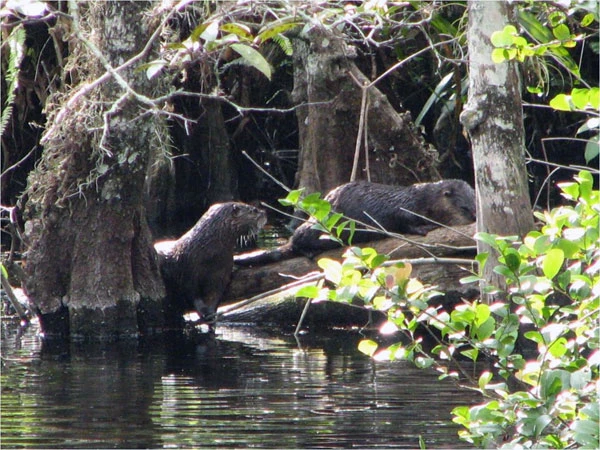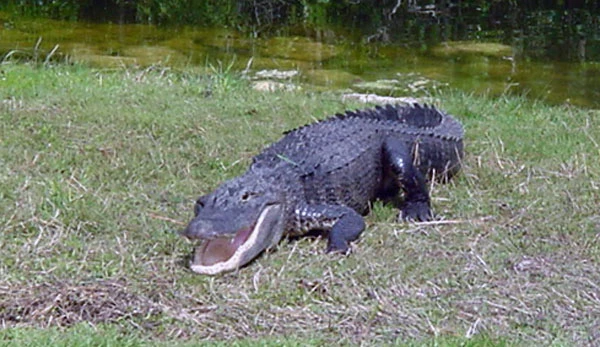|
Cypress swamps are communities that are dominated by bald cypress trees. These ecosystems assume differences in response to abiotic and biotic factors. The big cypress swamp, much of which is in Big Cypress National Preserve, is mostly composed of these types of communities. Other plants growing in the understory of big cypress swamp, are swamp fern, spikerush and marsh fleabane. Among the woody plants found in the understory are buttonbush, cocoplum, willow and wax myrtle. Growing on the trunks and branches of the cypress trees are epiphytes or airplants. Epiphytic plants attach themselves to other living plants, in this case the cypress trees. Instead of having its roots in the soil they are wrapped around the cypress tree to keep it securely in place. Well know epiphytes in the Big Cypress National Preserve are bromeliads and orchids. Epiphytes use photosynthesis to create its own food and obtain moisture from humidity, like fog and rain. Cypress trees grow in water and are found growing in solution holes. Solution holes are depressions in the limestone bedrock that have been broken down over time as a result of anaerobic decomposition of leaves, branches and flowers. This process creates a byproduct that is acidic and overtime dissolves the limestone bedrock. The roots of the cypress trees are able to break through the bedrock and take hold to grow. In a cypress dome, the overstory and the solution hole it is growing in mirror each other. The tallest trees grow in the deepest water and the smaller trees grow along the edge in the shallower water. Cypress domes, look circular in nature from above, though some look like an open hole doughnut. This happens in many cypress domes, the center of the domes have no trees. In this case, the solution hole is too deep in the center for cypress trees to become established and a collection or pond of water is common. This type of open dome is inviting to alligator flag, willow or other plants that can tolerate deeper water. As these deeper solution holes almost always hold water year-round, they are an important refuge for aquatic animals like alligators. Alligators will make these holes deeper and wider by displacing the peat and other debris. In the dry season, the remaining water for wildlife is found here and we call it an Alligator hole.
Cypress Strands vs. Cypress DomesCypress strands are swamps that are dominated by cypress trees, similar to cypress domes, but the primary difference is that a strand is an elongated or linear feature like a strand of hair. Strands are generally much larger than domes, with a ground elevation slightly lower than the surrounding communities, and are flow ways of inland swamps. The flow of water is generally in a small creek or slough and moving southwest. Other trees that are found growing in the strand are adapted for the hydric conditions, such as the red maple. Cypress domes and Strands have a long hydroperiod. The deeper areas stay wet throughout the year especially in the center of the domes and in the sloughs. On the perimeter of the domes and strands, and in sparsely populated areas of cypress, the water levels may drop considerably during the very driest time of the year, but the ground will usually remain damp. Animals Often Found in Cypress Swamps:River OtterRiver otters can be found in the freshwater areas of the preserve especially in the cypress swamp. Otters have short legs and webbed toes adapted for swimming. River otters live under the roots of trees at the water's edge. They do not dig their own dens, but use other animals' dens or natural holes. 
American AlligatorOne of our most famous residents of the cypress swamp is the American alligator. Because of hunting and poaching in the early 20th century the American alligator was listed as an endangered species. As the numbers began to steadily rise, the American alligator was able to be taken off the list. Today, the American alligators is listed as threatened because it looks similar to the American crocodile that is listed as endangered. This listing is to help bring back the number of American crocodiles. 
Mix with the salt water as you adventure into the habitat with the lowest elevation, the estuaries. |
Last updated: August 5, 2025
